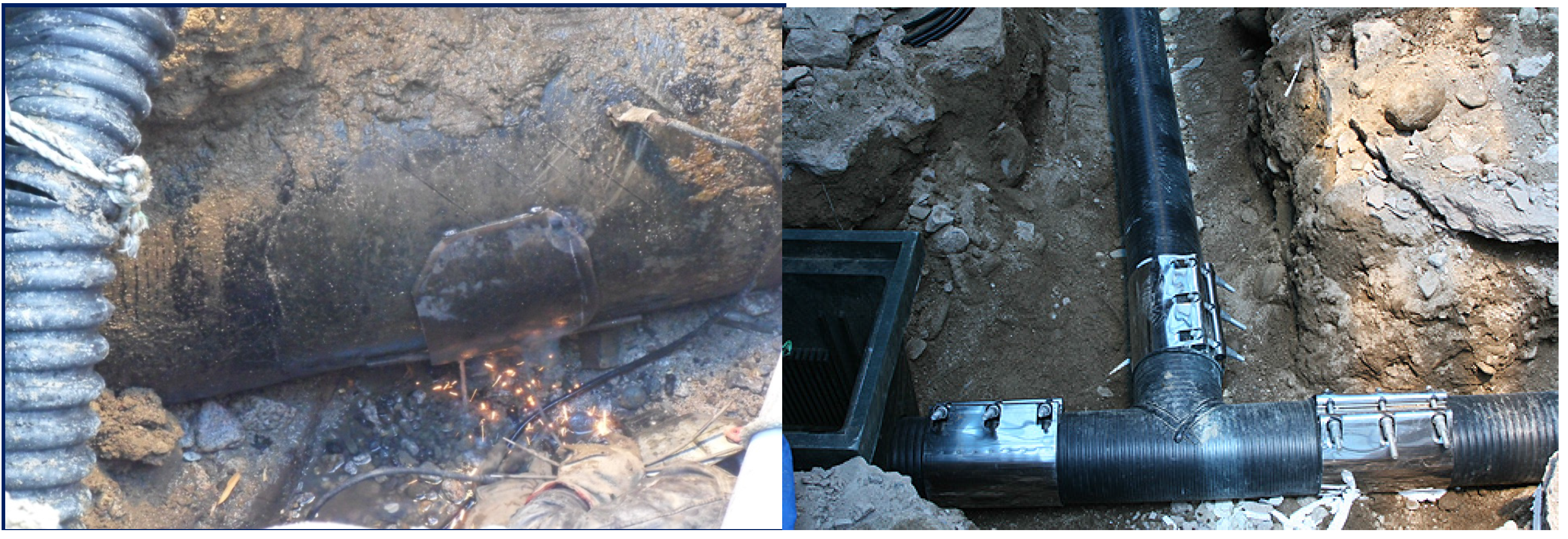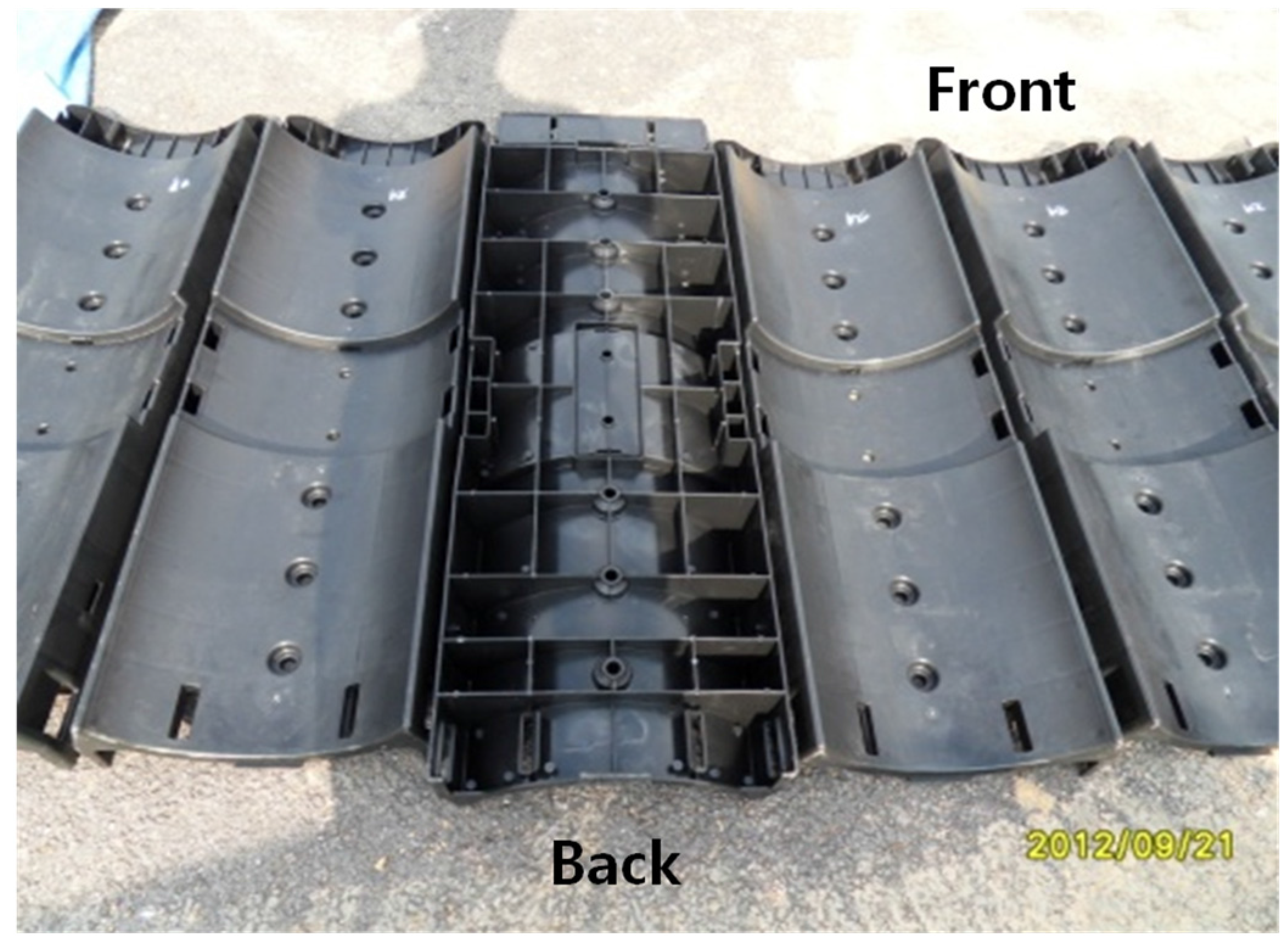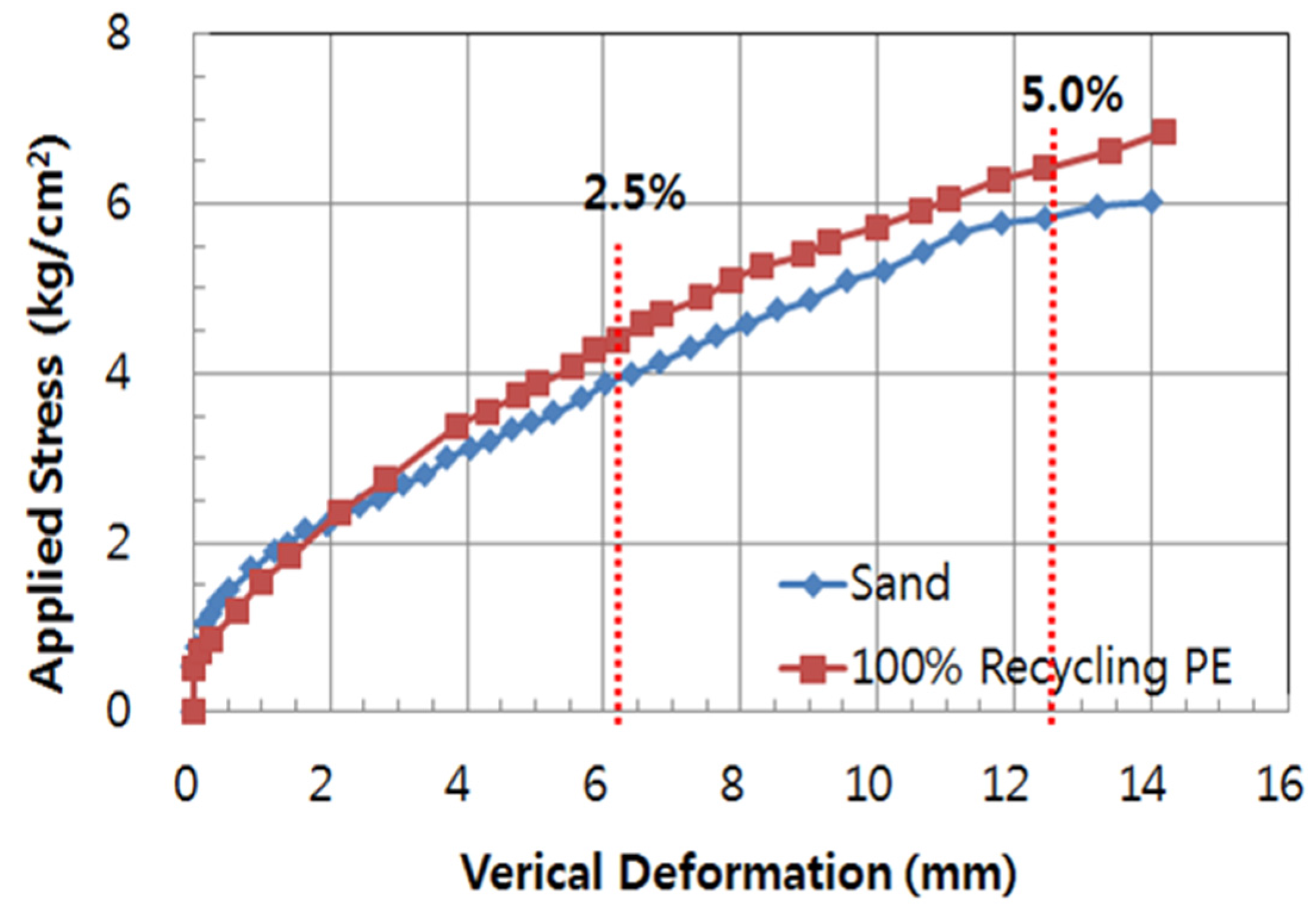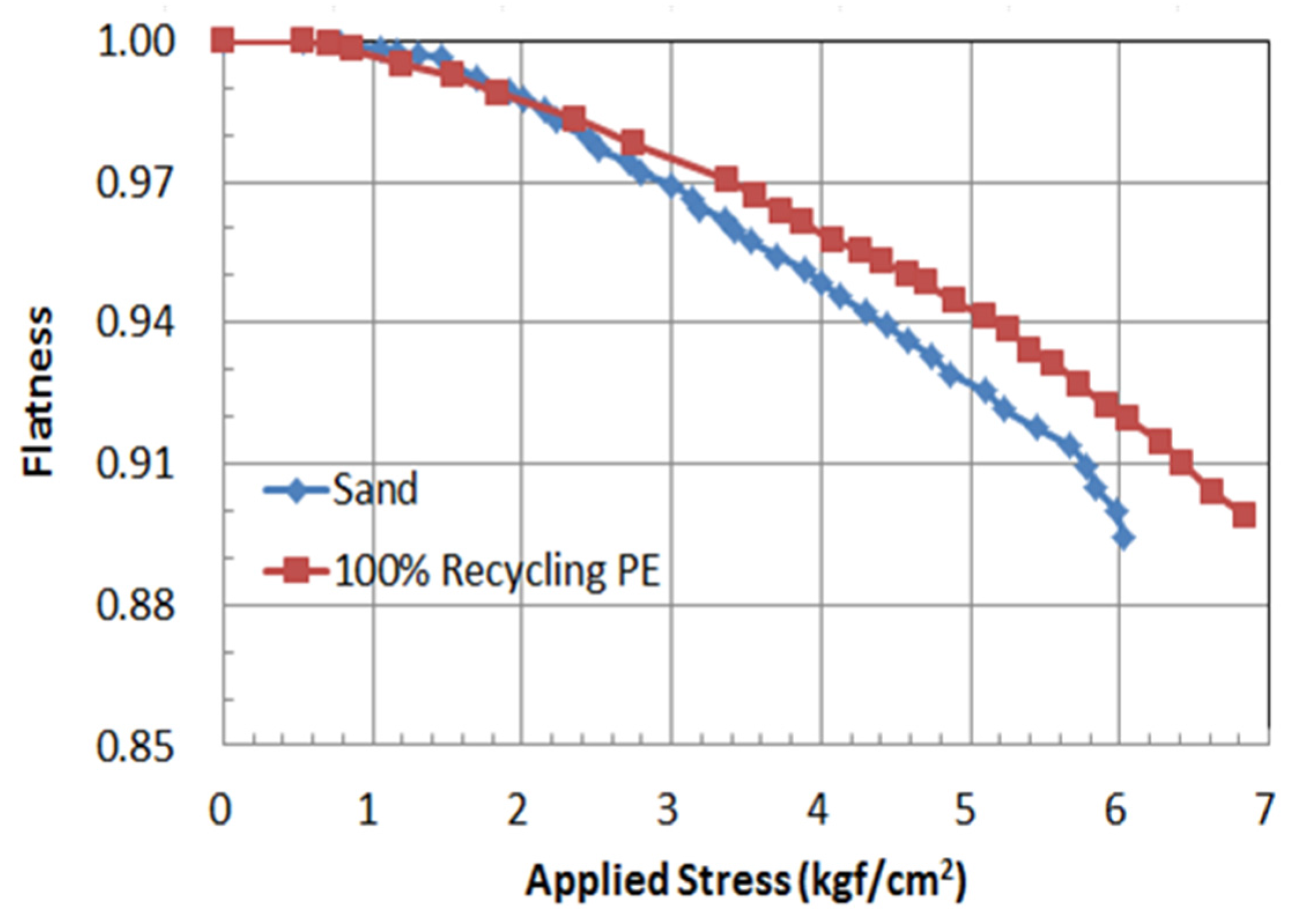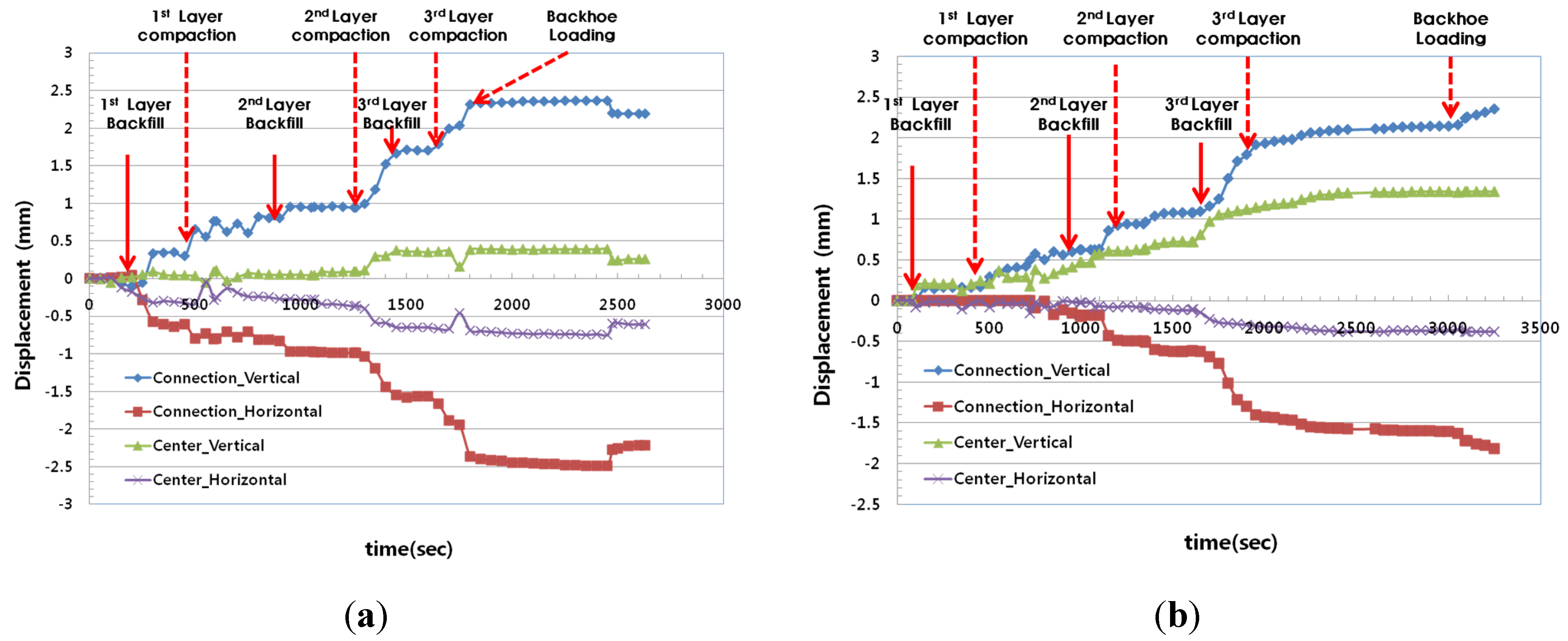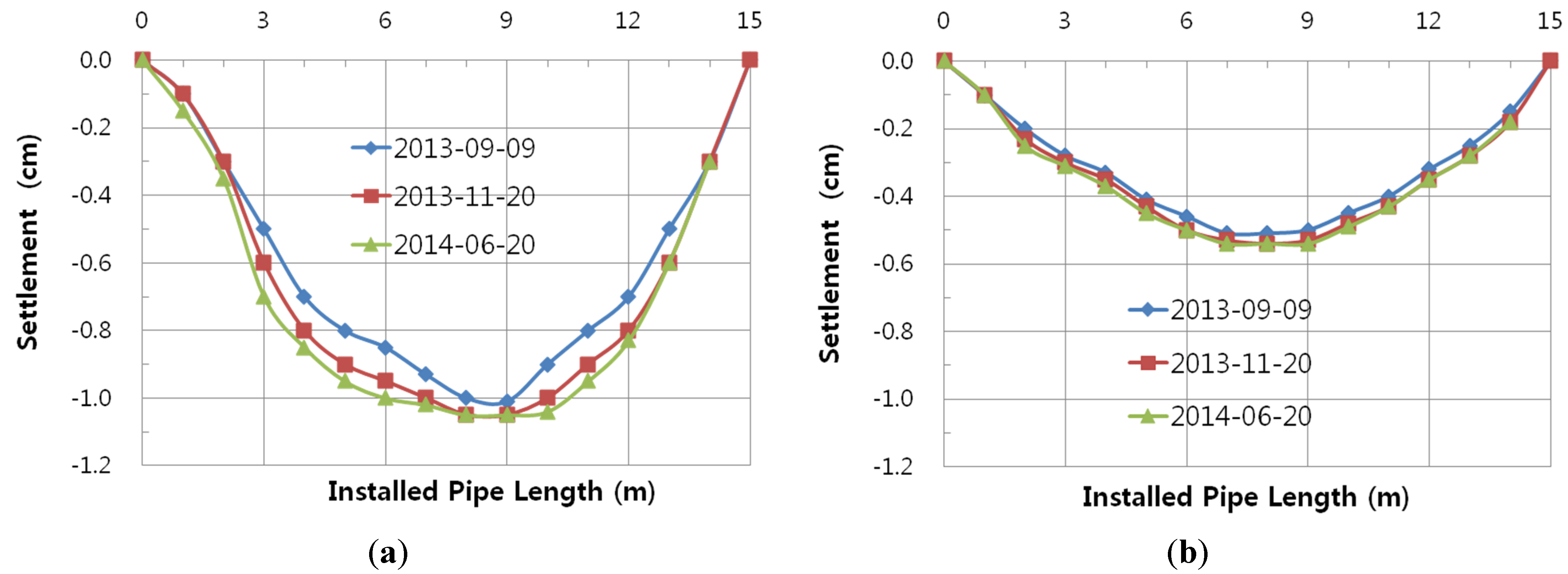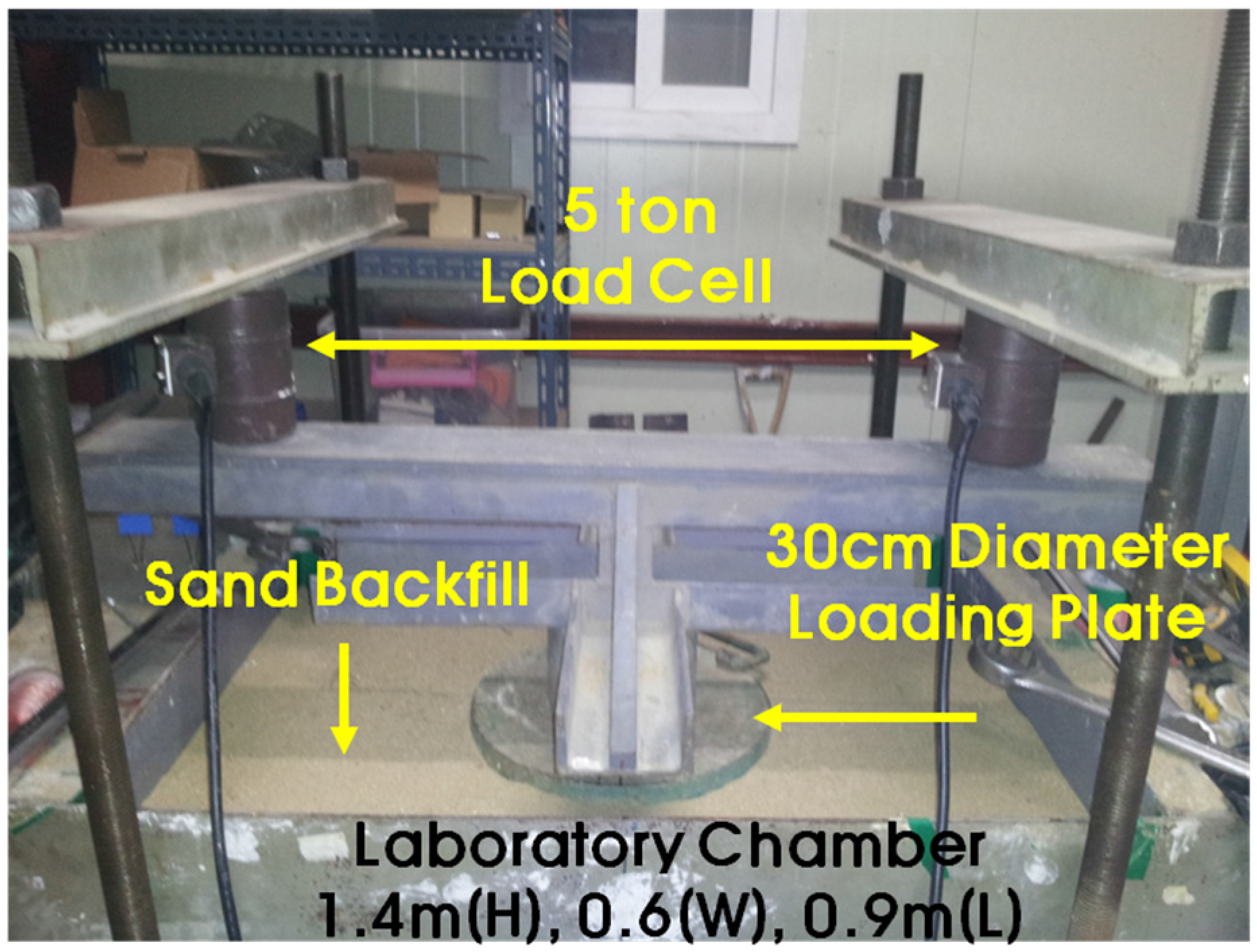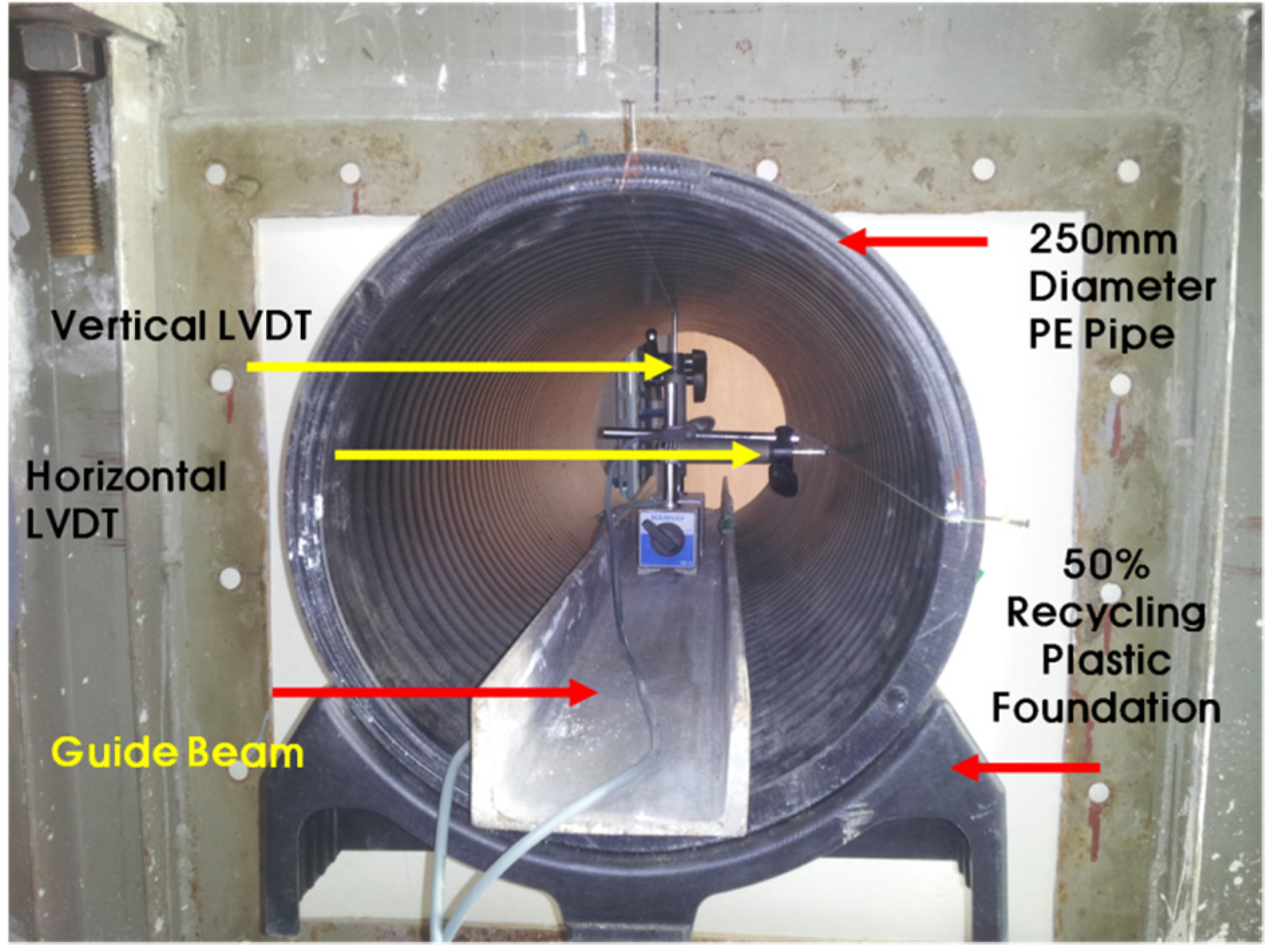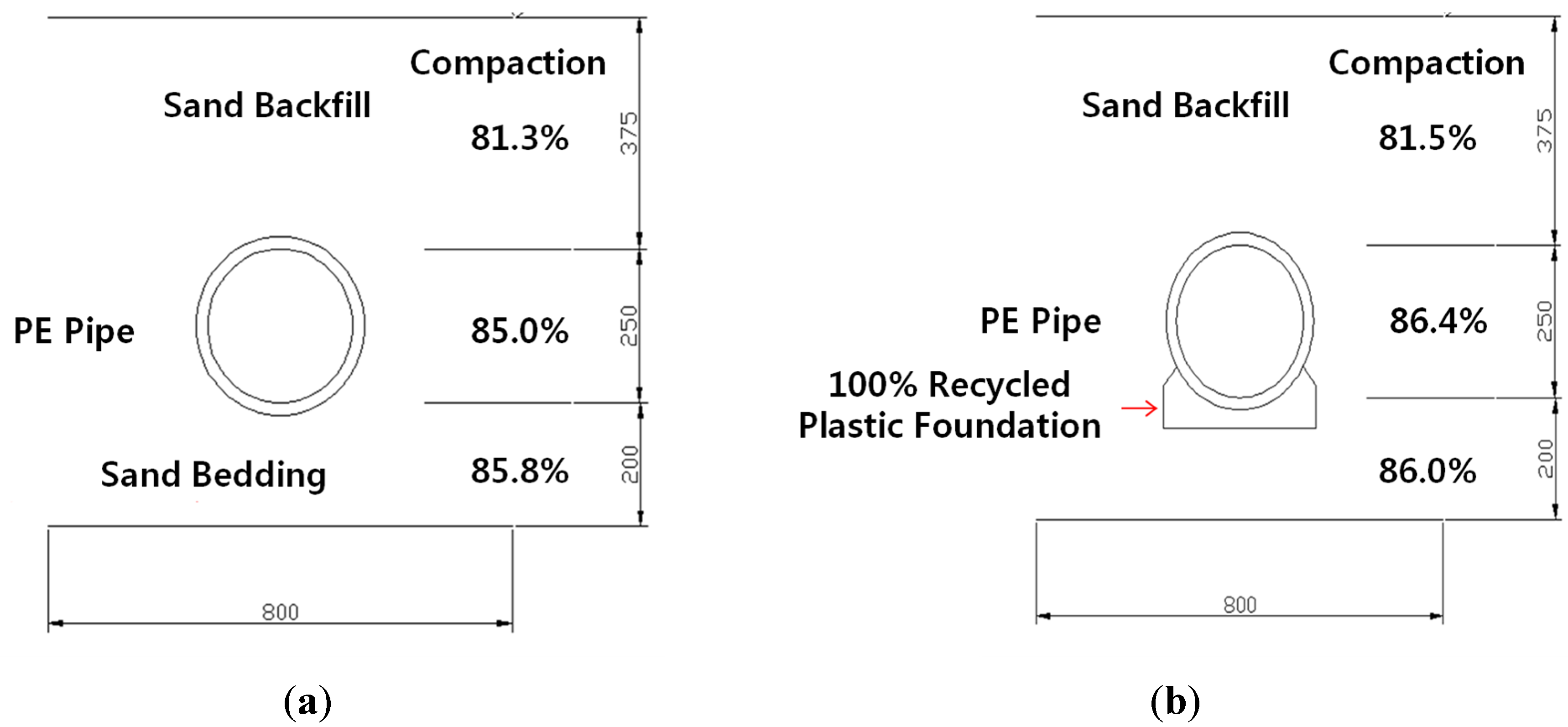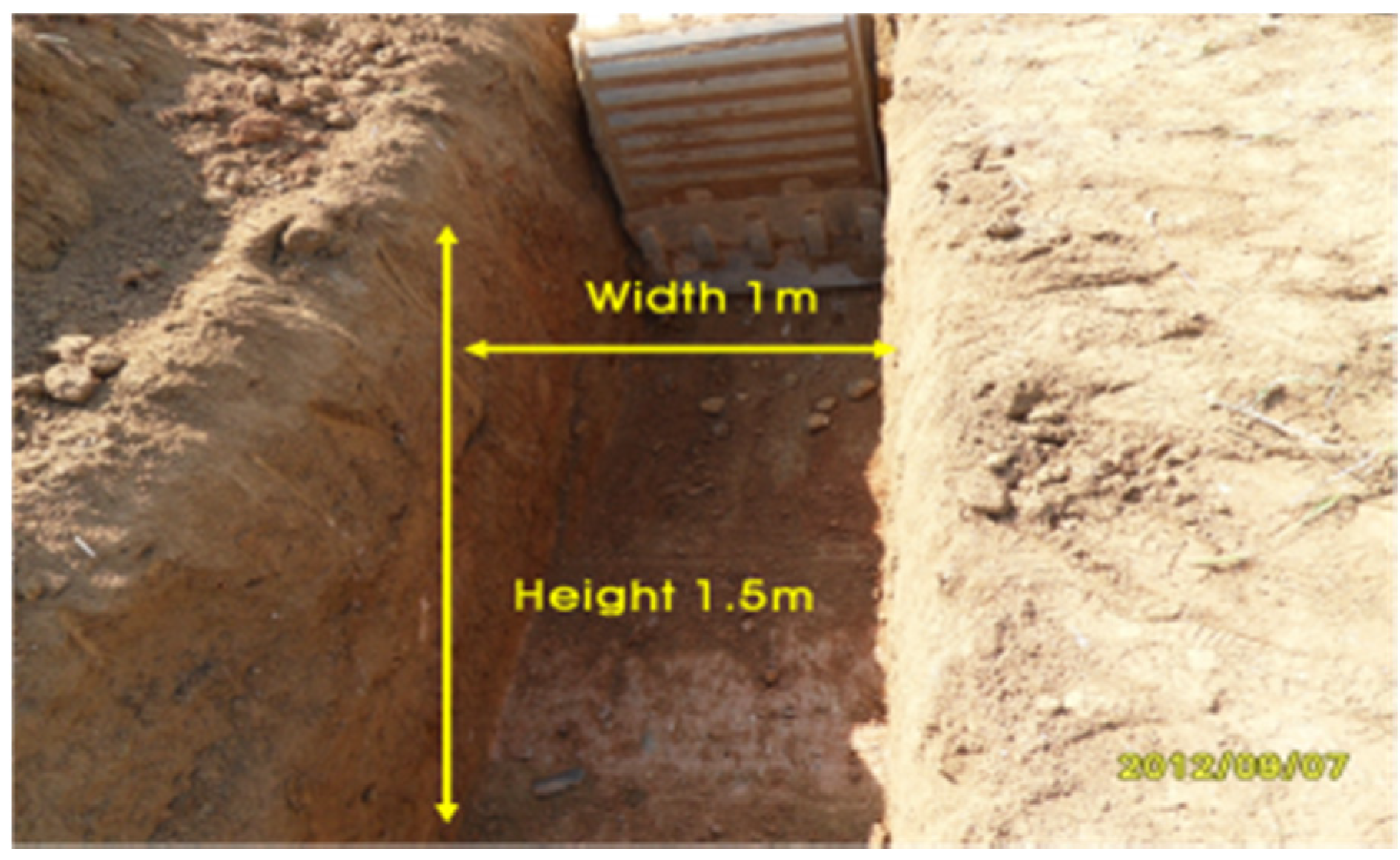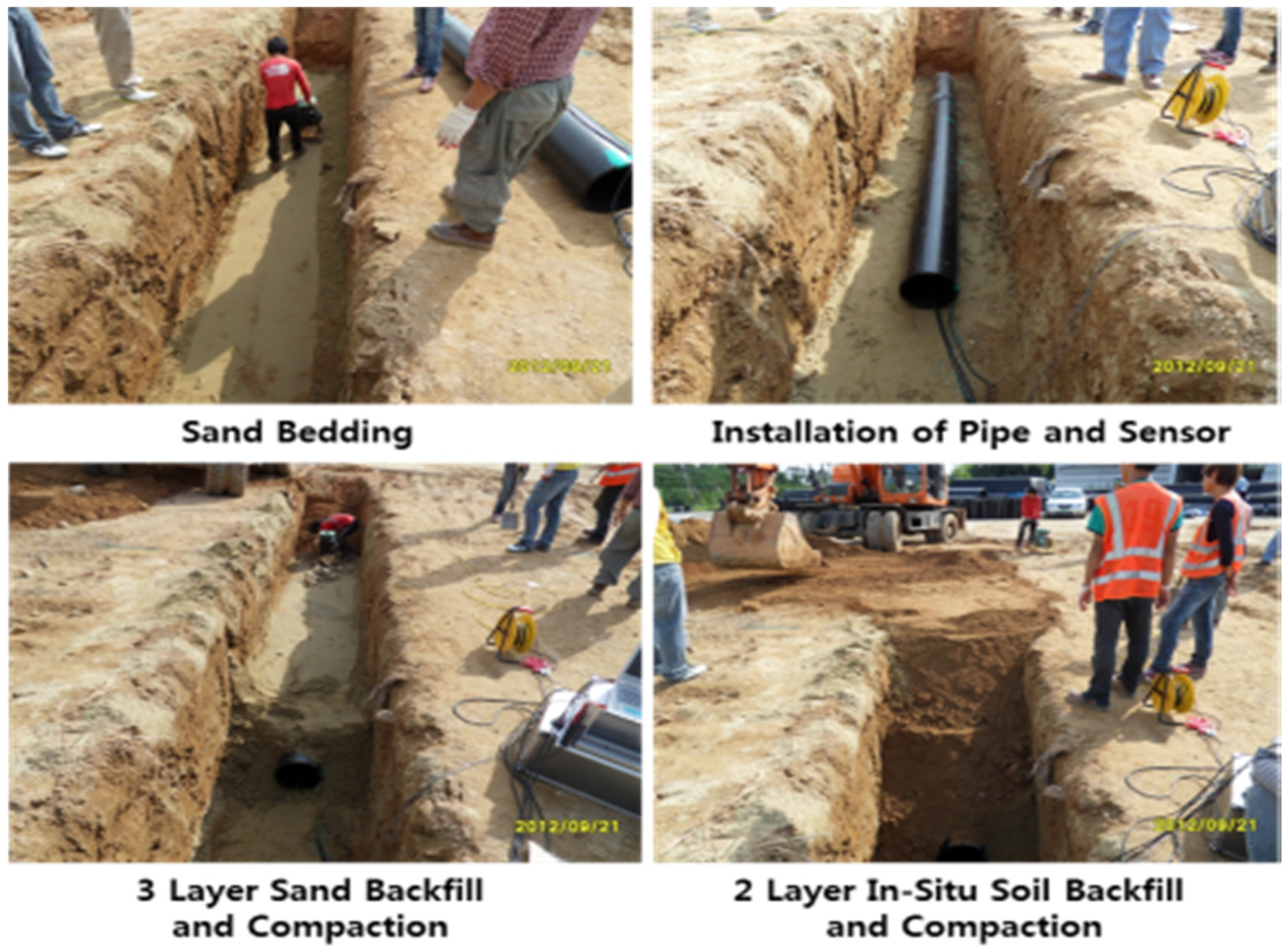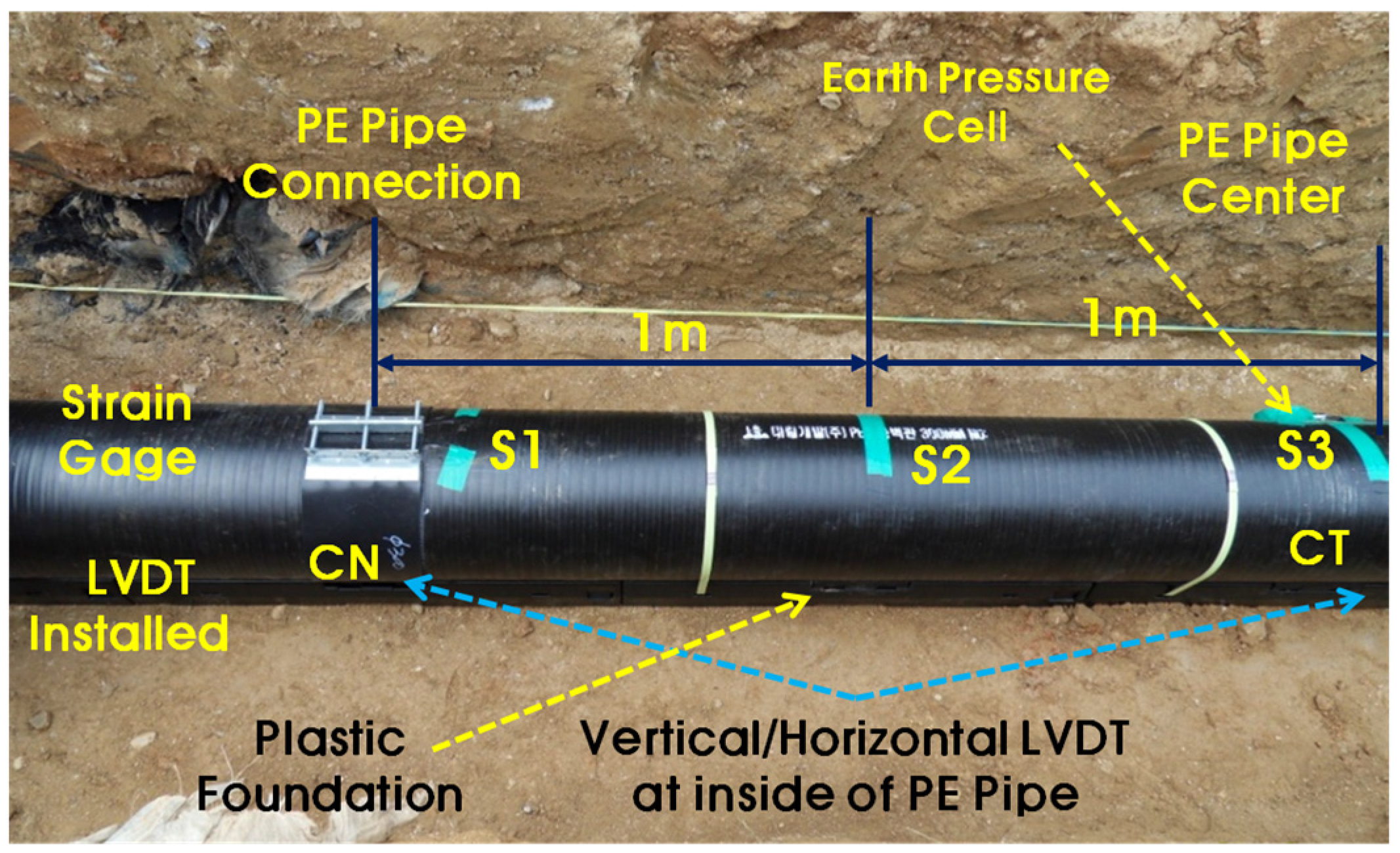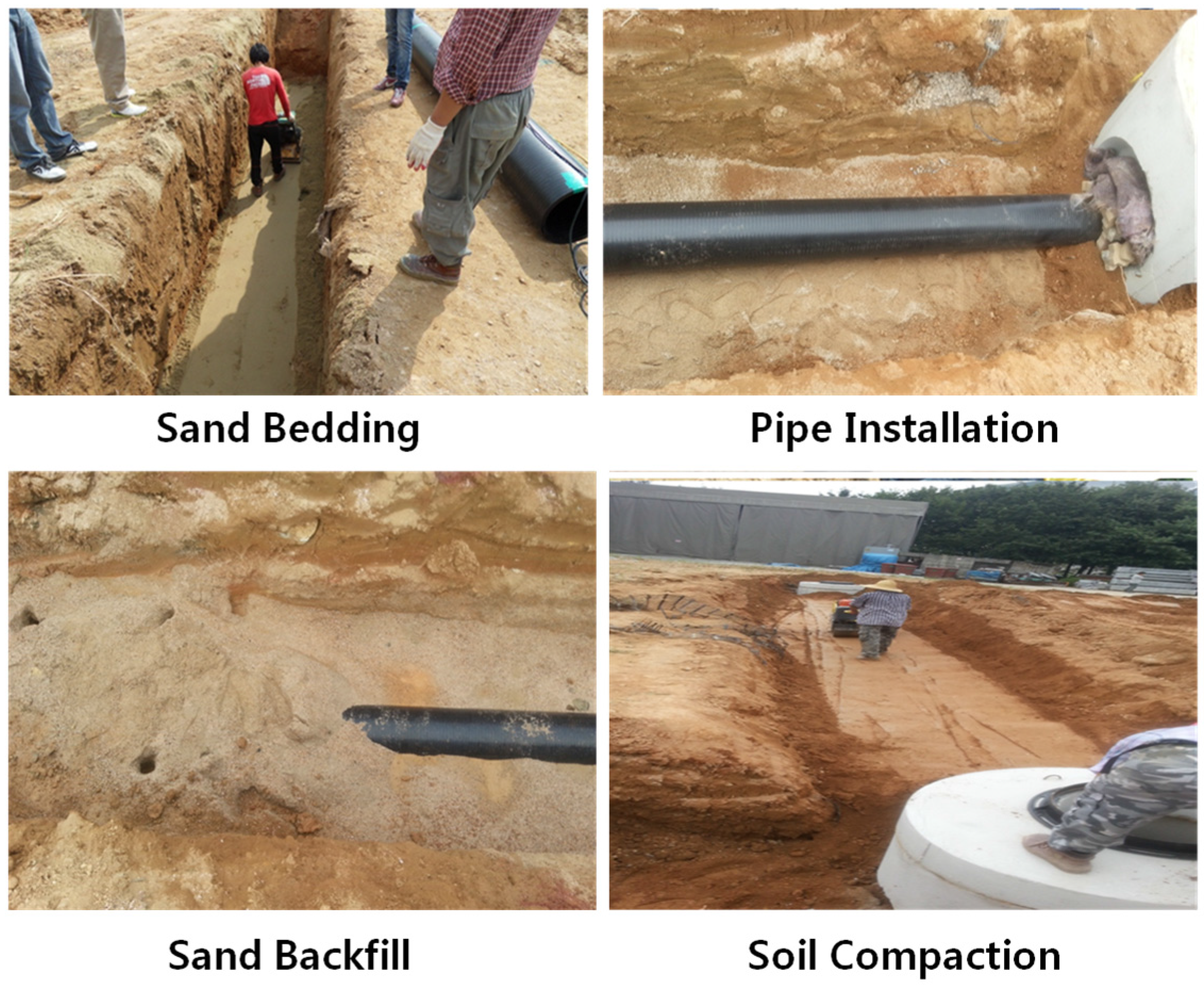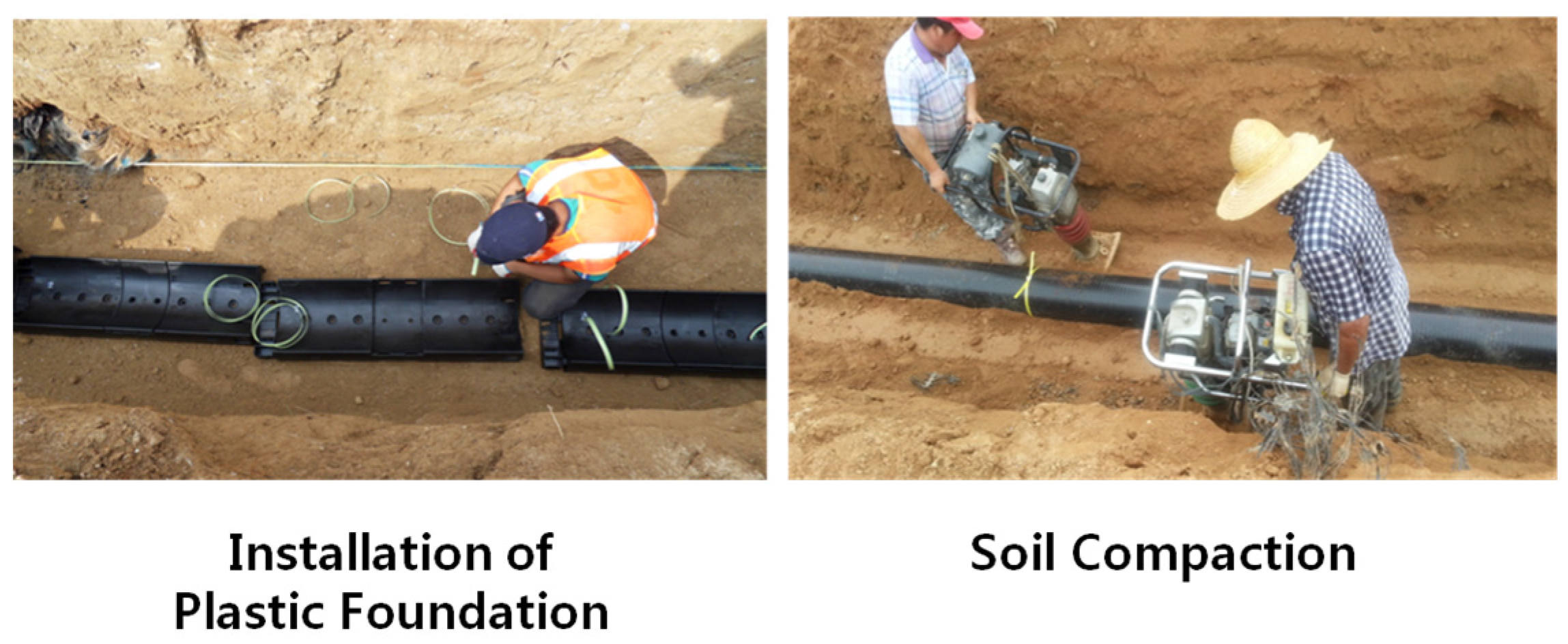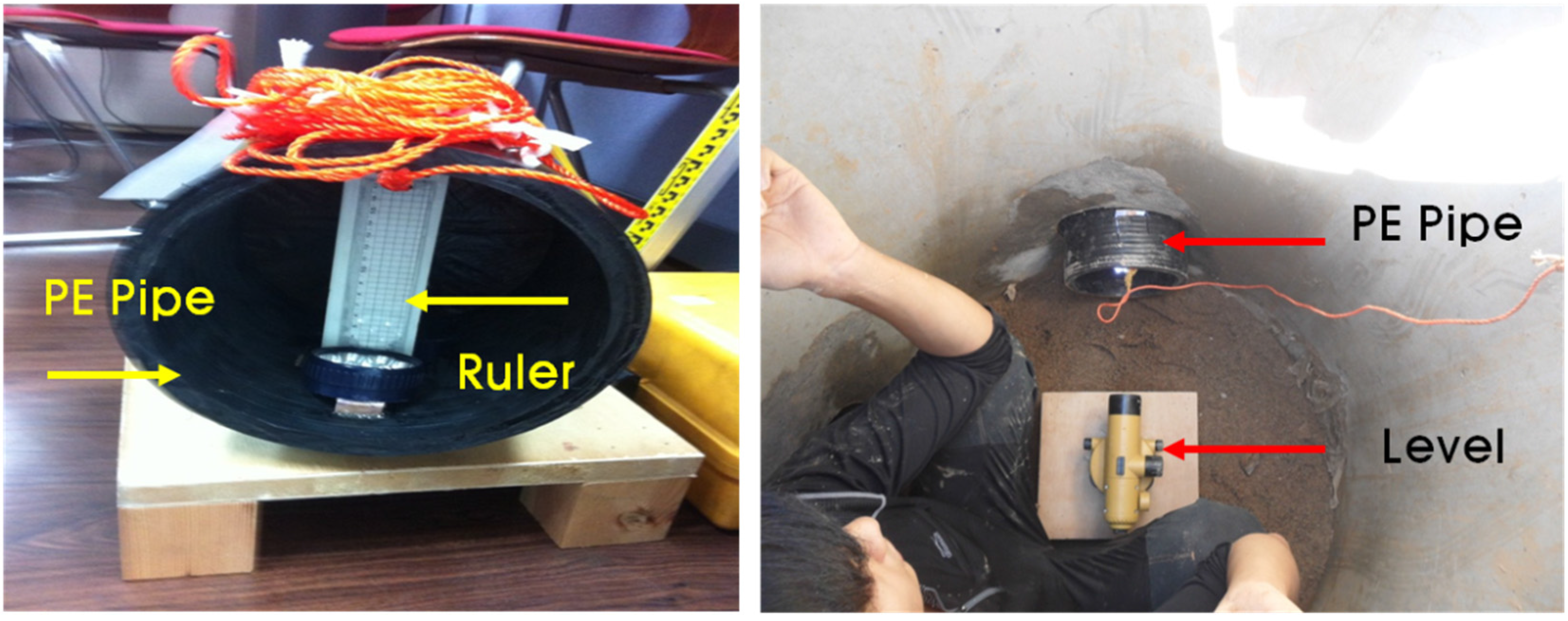Modern civilization has been developed in a city-oriented manner, and infrastructure has gained increasing importance to maintain the functions of cities. Sewage pipelines are crucial city infrastructure. Pipelines are analogous to blood vessels in our body; water pipes are like the main arteries, and sewage pipelines are like veins that act as the lifeline of the city. Once sewage pipelines are constructed, they are expected to remain in use for 20 years as a highly critical national infrastructure to carry wastewater and rainfall to sewage treatment plants or reservoirs [
1].
The government of the Republic of Korea declared 2002, “the first year of sewer special maintenance”, and has focused strong attention and investment on the sewage and infrastructure sectors. Because of this, the Ministry of the Environment has begun the Sewer BTL (Build-Transfer-Lease) Project and the Han River sewer improvement project, a sewer facility expansion project for upstream areas across the nation. They have also devoted more effort to ensure smooth progress of the sewer improvement project budget for the active sewer business.
In recent years, the use of flexible pipe including thermoplastic resin pipe and thermosetting plastic resin pipe has increased. The major advantages are easy use, excellent durability, flame-retardation and easy transportation. These sewer pipes are classified as flexible plastic pipe. The performance of flexible pipe highly depends on the interaction with the surrounding soils. Korea features several types of major damage to sewage pipelines: approximately 38% are joint defects, approximately 30% are extrusions of the connection part, approximately 30% are joint connection defects, 12% are due to the accumulation of impurities inside of the pipes, 10% are cracks and 10% are other types of damage. Joint defects, joint connection defects and other defects make up approximately 70% of the total damages and are related to quality management and the degree of the compaction of backfill materials that are executed around the pipes [
2,
3,
4]. The age of the material, sink of pipe backfill materials and various other factors affect the damage to sewage pipelines. Furthermore, pipes buried underground are not visible, and risks are not visible. Therefore, some problems may result in serious damage, as depicted in
Figure 1. More severe damage can occur in a short time frame due to heavy torrential rain caused by recent climate change, inadequate drainage for rainfall, the defects in connection joints and pipe damage [
5,
6]. RCA is a by-product of the construction and demolition activities of concrete structures. Concrete chunks are crushed into aggregates of variable sizes depending on the field of application. Various authors have reported on the geotechnical properties of RCA in geotechnical and pavement sub-base applications [
7,
8]. Several researchers have stated that appropriate design methods in pipe backfilling can be set in a way that can minimize or partly prevent contaminants [
9,
10,
11]. Among them, Rahman
et al. [
8] investigated the suitability of recycled construction and demolition materials as alternative pipe backfilling materials for storm-water and sewer pipes. Three commonly found recycled construction and demolition waste materials—crushed brick, recycled concrete aggregate and reclaimed asphalt pavement—were investigated to assess their suitability as pipe backfilling material. The physical, geotechnical and chemical properties of these construction and demolition materials were compared to specifications from the local engineering and water authorities for typical quarried materials to assess their performance as a viable substitute for virgin quarried aggregates in pipe backfilling applications.
The objective of this study was to evaluate the performance of recycled plastic foundations for sewage systems. The use of plastic foundations could reduce damage to connections of sewage pipelines and improve their safety. In this research, two different types of tests (a small chamber test and a field test) were conducted. The purpose of the small chamber test is to verify the performance of PE pipe without and with plastic foundation. This result was used to setup the test combinations or the field test. Two types of field test were conducted. The first test checked the feasibility and constructability of plastic foundations. The second test simulated the field construction to check the deflection of PE pipe, which was installed on the manhole.
Figure 1.
Failure of underground pipelines.
